Search
Search Results
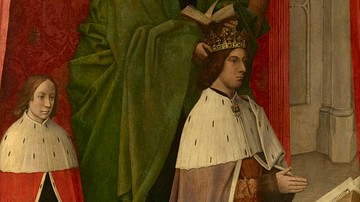
Image
James III of Scotland with St. Andrew
A c. 1480 painted panel from an altarpiece by Hugo van der Goes showing Saint Andrew presenting James III of Scotland (r. 1460-1488). On the left is James' son, future James IV of Scotland (r. 1488-1513). National Gallery of Scotland, Edinburgh...

Image
Head of a Local Deity, Birrens, Scotland
In the Roman empire deities which were not part of normal Roman beliefs were often readily adopted and worshiped. On the frontiers, such as Scotland, soldiers worshiped local gods and goddesses. This is a head of an unknown local deity. From...
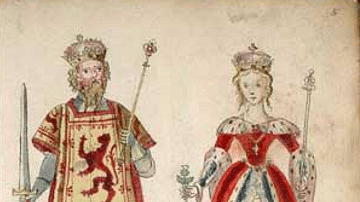
Image
Malcolm III of Scotland & Queen Margaret
A 1562 CE manuscript illustration showing Malcolm III of Scotland (r. 1058-1093 CE) and Queen Margaret. (National Library of Scotland, Edinburgh).

Image
Weaving Combs from Ancient Scotland
These combs were made of whalebone. What makes whalebone particularly useful is not only is it strong, dense, and resilient, but it can also be used to produce objects of very large sizes. This collection of weaving combs is from Gurness...
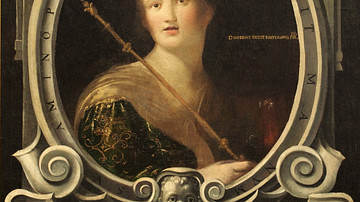
Image
Saint Margaret of Scotland by Obra de Juan de Roelas
A c. 1605 painting of Saint Margaret of Scotland (c. 1046-1093 CE) by Obra de Juan de Roelas. Margaret was the queen of Scotland and wife of Malcolm III of Scotland (r. 1058-1093 CE) from 1070 to 1093 CE. (Church of San Miguel and San Julián...

Image
Queen Margaret of Scotland
A c. 1480 painted panel (detail) from an altarpiece by Hugo van der Goes showing Queen Margaret of Scotland (d. 1486), wife of James III of Scotland (r. 1460-1488).
National Gallery of Scotland, Edinburgh.
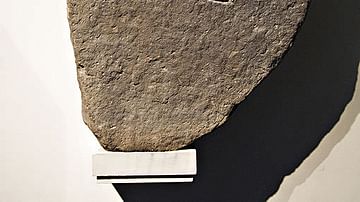
Definition
Picts
The Picts were a people of northern Scotland who are defined as a "confederation of tribal units whose political motivations derived from a need to ally against common enemies" (McHardy, 176). They were not a single tribe, nor necessarily...

Definition
Mary of Guise
Mary of Guise (aka Marie de Lorraine, 1515-1560) was a French noblewoman who became the second wife of James V of Scotland (r. 1513-1542). With the premature death of her husband, her daughter Mary, Queen of Scots (r. 1542-1567) became queen...

Image
Map of Feudal Scotland
A map of feudal Scotland. Created in 1876 CE.
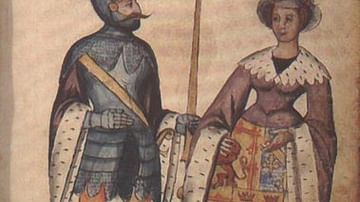
Image
Robert I of Scotland & Isabel of Mar
A mid-16th century CE manuscript illustration showing Robert the Bruce, King of Scotland (r. 1306-1329 CE) and his first wife Isabel of Mar (d. c. 1296 CE). (National Library of Scotland, Edinburgh)